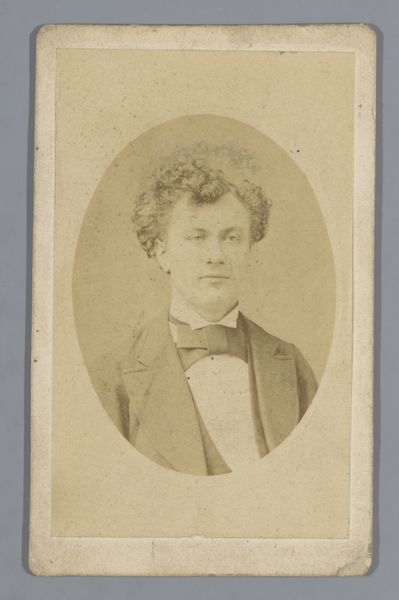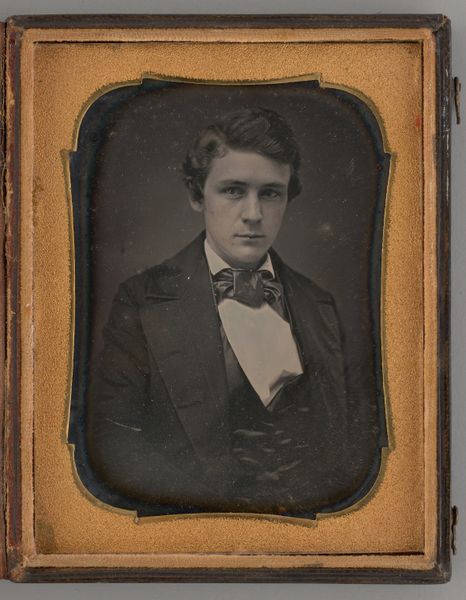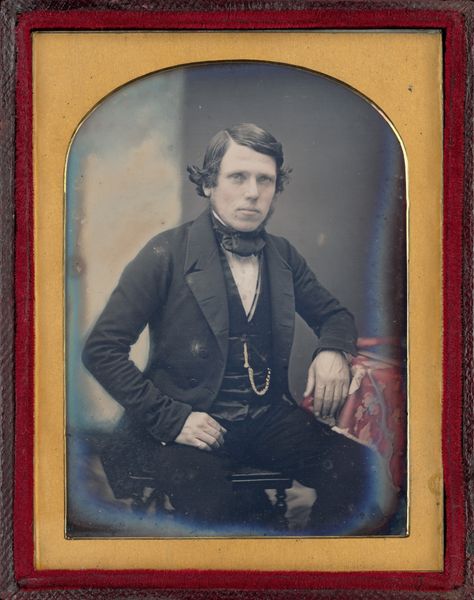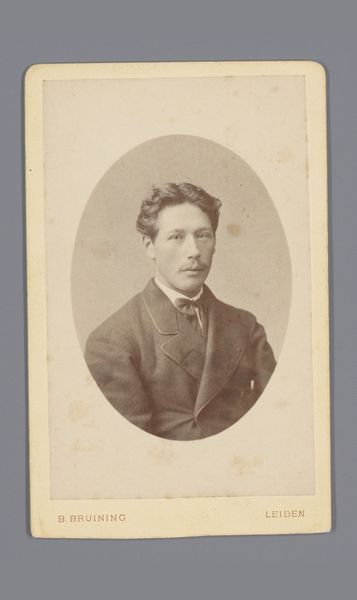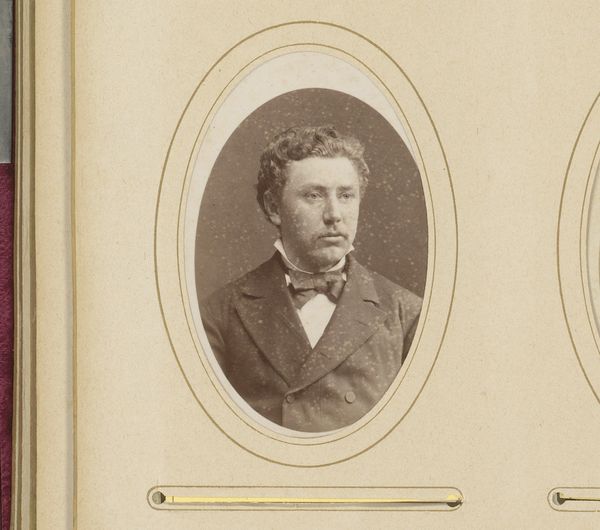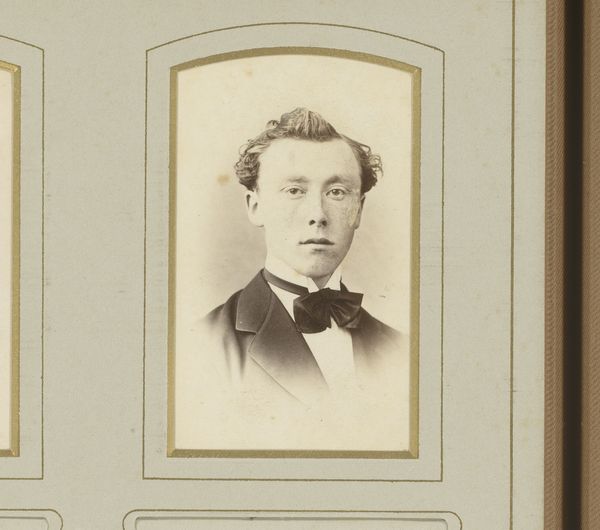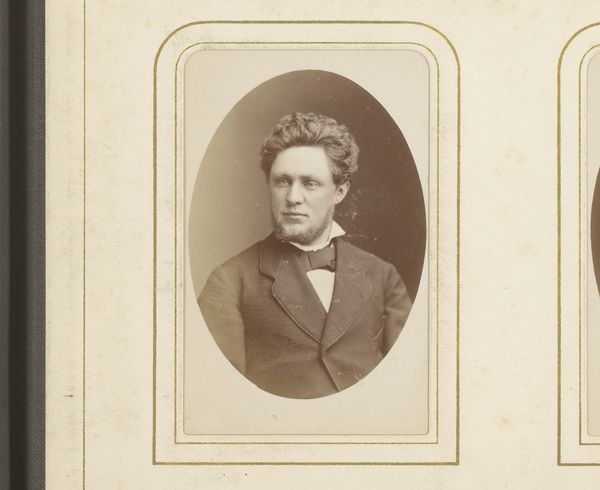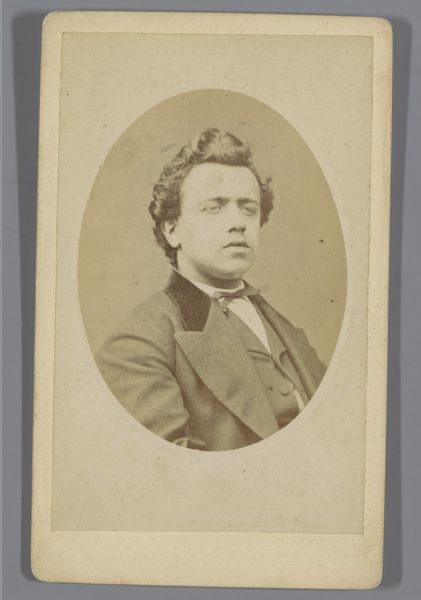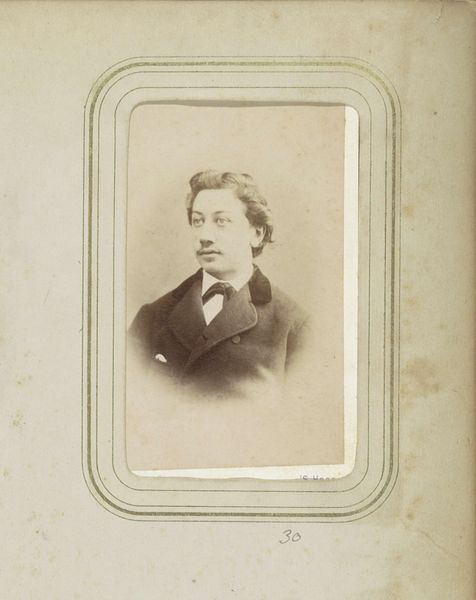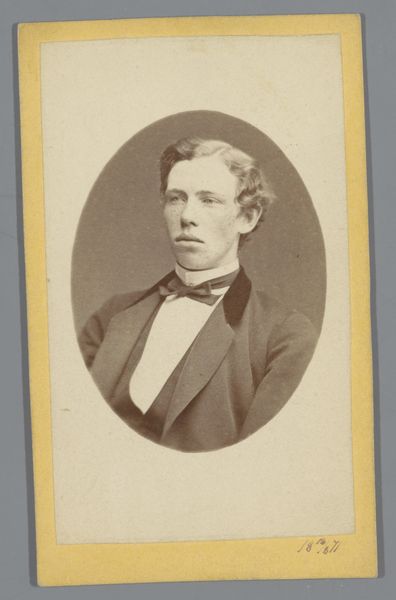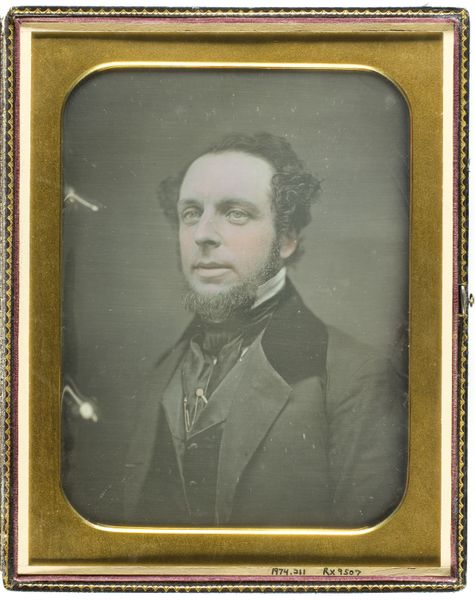
daguerreotype, photography
#
portrait
#
16_19th-century
#
daguerreotype
#
photography
Dimensions: 13.8 × 10.7 cm (5 1/2 × 4 1/4 in., plate); 15.3 × 12.4 × 1.1 cm (open case); 15.3 × 12.2 × 2.5 cm (case)
Copyright: Public Domain
Curator: Here we have an "Untitled (Portrait of Man)" daguerreotype from 1858, now residing here at The Art Institute of Chicago. It's quite striking. Editor: It is. There's an arresting seriousness in his gaze, almost a challenge. And the contrast! So stark. He seems very self-aware, maybe even performative? Curator: Well, daguerreotypes, given their lengthy exposure times, practically demanded stillness and formality. It was a social performance in itself, a very deliberate act of representation. Imagine sitting for that long! Editor: That's true. The time and effort... it definitely elevates the subject. I wonder what class he belongs to? His clothes are very somber, but refined. And there's a kind of romantic air with his curls... Is he perhaps an artist? Curator: Potentially, or a member of the rising professional class. Portraiture, including photography, served to reinforce social standing. These portraits became more accessible to the middle class throughout the 19th century, altering representation. Editor: Representation. Yes, that is the heart of the matter. What did it mean to have your image captured like this, enshrined in a way, for generations to come? How does this compare to more exclusive art forms reserved only for wealthy elites? Curator: Photography radically democratized portraiture, even if access was still stratified. Daguerreotypes provided a sense of tangible connection across time, making a past feel so immediate, even now. They transformed how societies viewed themselves and their relationship to posterity. Editor: Looking at him, I imagine his hopes, the social pressures he might have felt... the boundaries he had to negotiate. There is so much story contained in this one captured moment. It also highlights how we frame representations in order to support, deny, and re-imagine power. Curator: Exactly. By considering those sociopolitical constraints, we are better equipped to decipher the role this "Untitled Portrait" plays in shaping collective memory. Editor: Absolutely. Thanks for opening my eyes further to the context surrounding this artwork. Curator: The pleasure was all mine, you gave me some great perspective too!
Comments
No comments
Be the first to comment and join the conversation on the ultimate creative platform.

